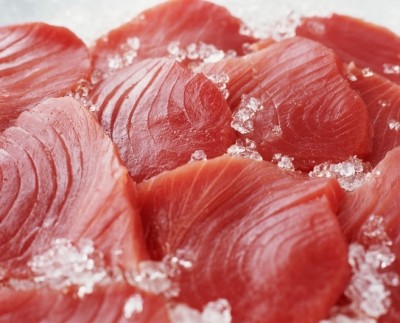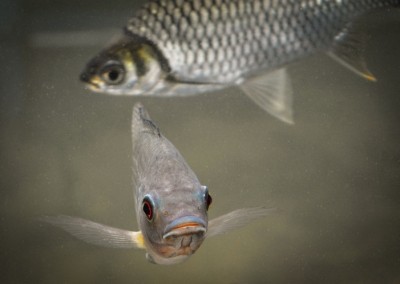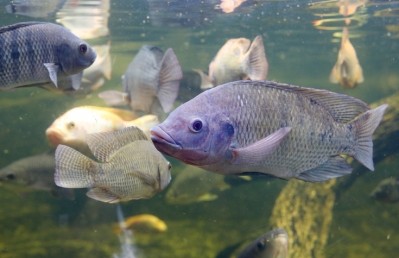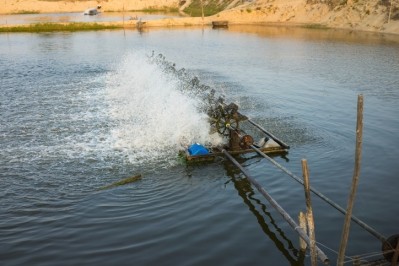Turning tilapia into tuna: Feed additive may boost muscle quality in farmed fish
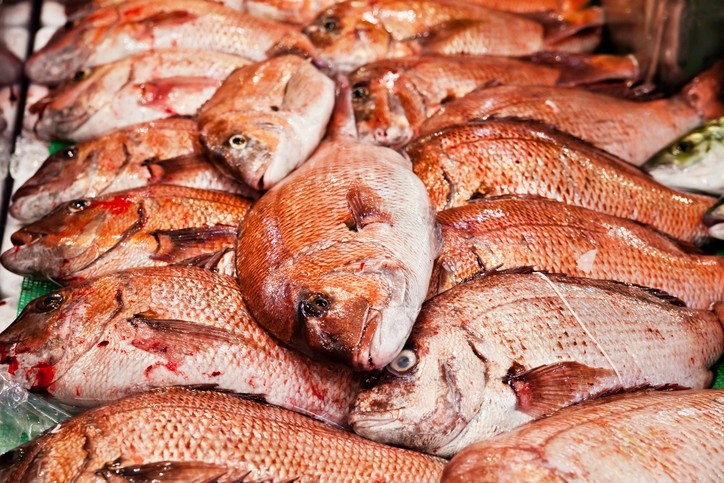
The initial interest in studying the addition of B-guanidinopropionic acid (B-GPA) as a feed additive for red porgy ((Pagrus pagrus) was based on the alterations that the additive can produce in mammals, said Dalon White, corresponding researcher.
“The idea behind the study was trying to turn a tilapia into a tuna.
“B-GPA causes a lot of changes in mice or in humans – it causes a lot of musculature changes. The idea was that a tuna can’t be grown in captivity, but tilapia can, but [we asked whether there] would be a way to change the musculature to make it more appealing for consumers," he told FeedNavigator.
Potentially the feed additive could be a way to improve muscle development in fish or the firmness of the fillet generated by the fish, which is a more desirable quality for consumers, he said.
“If you can increase the desirability of the product you could increase the sales.”
The research team found that that additive did not alter whole animal growth or the fiber size for skeletal muscle or myonuclear recruitment. However, there was an increase in the mitochondrial volume and a shift in the amino acid composition in the musculature.
Both findings indicated that B-GPA affected fish muscle in a manner similar to what is seen in mammals and may be beneficial for use in aquaculture, the researchers said.
The group expected the results to be more definitive, said White.
“Fish muscle is similar to mammalian muscle so we expected a pretty dramatic effect,” he said. “We’d done a pre-trial in a different species and we’d seen some greater effects.”
The research team published its work in the journal Comparative Biochemistry and Physiology.
Why B-PGA?
Growth rate and muscle quality are important considerations for aquaculture producers, as is understanding the relationship between growth rate and muscle enhancement, said the researchers.
B-GPA is a creatine (Cr) analog that binds to the creatine transporter, they said. However, it also is suitable for human consumption and an inexpensive dietary supplement, meaning it could provide an alternative way to develop muscle quality in fish.
Exercising fish can improve muscle quality, but it is logically difficult to implement, they said. When fish have elevated energetic demand, like that associated with exercise, ATP is used and the phosphate from phosphocreatine (PCr) is transferred.
B-GPA can play a similar role and allow an increase in AMP concentration, which improves the aerobic capacity in the muscle, they said. “While the mechanisms are different, both exercise and β-GPA treatment lead to elevations in AMP concentration, which induces training-like effects in skeletal muscle that may be useful in fish aquaculture,” they added.
In fish, exercise also boosts growth rate, growth period, survival, immune state, general health and reproductive control, the researchers said.
“The difference between farm-raised salmon and wild-caught salmon is a farm-raised salmon is softer and lighter in color because of lack of exercise,” said White. However, it is hard to induce farmed fish to exercise.
“We figured that B-GPA could be something that was used to do that based on what happens in mammalian models,” he said. “The whole study was focused on muscle and a lot of the growth regulation is tied directly to bone formation and elongation – the growth of the organism.”
Methods and materials
In the feeding trial, 40 juvenile red porgy were given one of two diets for a period of 4 or 12 weeks, the researchers said. The diets included a control with 5% a-cellulose and the control diet with 5% B-GPA in place of the a-cellulose.
Fish were weighed on day 0, in week 6 and at the end of the trial, they also were measured, they said. Feed conversion efficiency was calculated.
At the end of both feeding periods, fish were collected, epaxial muscle samples were taken and growth and feed conversion were established, they said.
Results
Overall, both Cr and B-GPA were found in skeletal muscles and after 12 weeks the cellular Cr concentrations had dropped by 30% compared to control group levels, the researchers said. Multiple metabolites also were found to vary significantly between the two groups of fish.
Body mass and skeletal fiber size were similar for fish in both groups, they said. At 6 and 12 weeks fish on the supplemented diet saw a drop in feed intake, but feed conversion could not be accurately calculated, they said.
Although the results were not as demonstrative with the red porgy as what was seen in a pre-trial project, the additive still creates a change in the fish, said White. “It definitely works in the fish – it enters the pathways that we expected it to.”
There was a change in the metabolite profile for the muscle of fish getting the supplemented feed, he said. “We’d seen increased in proline and hydroxyproline which constitute a large portion of the collagenous tissue surrounding muscles.”
Mammal tissue that is regularly exercised would display a similar change, he said. “B-GPA was increasing collagenous tissue, which should relate to firmness, but we didn’t measure that directly.”
“We saw some changes in metabolites, but we didn’t see the difference in growth that we saw in the pre-trial,” he said. “The conclusion was basically it was the species that we used.”
Red porgy traditionally have a diet based on invertebrates and may not have the same levels of the creatine transporter needed to take advantage of B-GPA, the way a carnivorous fish would, said White.
There are several questions still to be answered about the potential to use B-GPA in fish diets as a way to improve the texture of fish muscle – or the quality and firmness of the fillet produced, he said. “The next step would be testing it on a species that consumes a large quantity of fish.”
Source: Comparative Biochemistry and Physiology Part B: Biochemistry and Molecular Biology
DOI: doi.org/10.1016/j.cbpb.2017.11.010
Title: The effects of dietary β-guanidinopropionic acid on growth and muscle fiber development in juvenile red porgy, Pagrus pagrus
Authors: D White, B Baumgarner, W Watanabe, Md Shah Alam, S Kinsey
